Stepping into the modern workplace often feels like travelling into the future. High-tech tools and machines, smart devices, automated processes and state-of-the-art safety equipment dominate the scene, replacing the traditional image of work gear stained in sweat, grease and dust. This striking transformation owes its credit majorly to the sweeping wave of technology that has seamlessly seeped its way into every realm of our lifestyle. But, how exactly has technology revolutionized work gear? And what impact does it really have in the grander scheme of things? To dissect these questions we must first grapple with the understanding of what work gear is in the contemporary context. As we traverse through the depths of this enlightening journey, brace yourself to witness some of the most thrilling intersections of technology and work gear. Let us delve in!
Understanding Work Gear
In today’s busy world, the right gear is paramount in every field, but it holds particular importance in the construction and physical labor industries. Having a clear understanding of work gear helps ensure safety and productivity in the workplace. When tools become an extension of our bodies, work becomes an art. Let's delve into the fascinating world of work gear and understand its crucial role in our everyday lives.
Definition of Work Gear
Work gear, at its core, refers to equipment, attire, and accessories used in professional settings to enhance work efficiency, safety, and convenience. This gear can range from simple utility items like hard hats, high-visibility vests, and safety goggles to more specialized equipment like fall protection harnesses and respirators. Each piece is designed with a specific purpose and greatly aids in creating a secure, productive work environment. A notable resource worth mentioning here is our Beginner's Guide for Work Gear, a comprehensive manual providing insights into the fundamental aspects of work gear.
Types of Work Gear
There are countless types of work gear available, each created for different purposes and work conditions. Some of the most common categories include:
- Personal Protective Equipment (PPE): Gear designed for safeguarding the user from potential hazards in the workplace like safety helmets, gloves, eye protection, high-visibility clothing, safety footwear, and harnesses.
- Utility Gear: Items aimed at enhancing work efficiency like tool belts, knee pads, and temperature-appropriate clothing.
- Specialized Gear: Equipment for specific job roles or work environments such as anti-vibration gloves for workers handling machinery, chemical-resistant gear, insulated electrician gloves, and welders' masks.
Understanding your work gear, its uses, and benefits can be a turning point in your professional life. Beyond mere compliance with health and safety standards, familiarizing oneself with the right work gear can truly make work more comfortable and efficient. As we continue our exploration into various work gear, our objective remains not just to encourage its use, but to transform it into a natural and integral part of your daily work routine.
Role of Technology in Evolving Work Gear
As we usher in the era of digitization, industries worldwide are rapidly integrating technology into their core operations. One sector greatly benefiting from this tech-tide is the work gear industry. Over the past few decades, technology has played a paramount role in revolutionizing work gear, enhancing its durability, comfort, and safety, thus augmenting worker efficiency and reducing occupational hazards substantially. Let's delve into this a bit more.
Digital Advancement in Manufacturing Process
The introduction of digital technology into the manufacturing process has served as a catalyst for enhancing the robustness of work gear. Computer-aided design (CAD) and 3D printing have opened new fronts in precision and customization. Using CAD, designers can meticulously draft and assess gear designs before manufacturing, preventing potential flaws. On the other hand, 3D printing enables the production of supremely accurate prototypes and customization down to the millimeter, ensuring the produced gear fits perfectly.
Moreover, digital manufacturing methods have made the recycling and reuse of materials plausible, facilitating sustainable practices and leading to the production of eco-friendly work gear. Through digital methods, manufacturers have the flexibility to repurpose these materials, fostering a circular economy within the industry.
Importance of Ergonomic Design and Material Science
While strength and durability are indispensable attributes of work gear, the comfort of the user is equally important. This is where ergonomic design and material science step in. With technology's help, designers are now crafting ergonomic gear that caters specifically to the user’s physical comfort while minimizing strain during long working hours.
Also, the integration of material science has led to the creation of highly resilient and lightweight work gear. These include materials like moisture-wicking fabric and breathable microfiber, which keeps the user dry and comfortable even in strenuous conditions. Case in point, the Advances in Work Gear Technology, such as the development of rain gear clothing for construction workers, which aids them during adverse weather conditions.
Adaptation of Smart Technologies in Work Gears
Smart technologies have found a place in work gear, pushing the boundaries of safety and functionality. The integration of GPS and IoT devices into work gear now allows tracking worker's locations, ensuring their safety in hazardous sites. Moreover, sensory technology paints a clear picture about workers' vitals and environmental conditions, aiding in early hazard detection.
Advancements in wearable tech are another excellent example, with equipment like exoskeletons used to minimize the physical strain for workers performing heavy-duty tasks. Future innovations may even see the use of AR in helmets to provide real-time updates and guidance at work sites, thus elevating safety measures to a whole new level.
In sum, technology has permeated every facet of the work gear industry, optimizing processes and output while simultaneously boosting sustainability, user comfort, and safety. The future indeed looks promising, indicating further tech-integrated evolution and the emergence of more advanced work gear that balances resilience with comfort, contributing to a safer and more efficient work environment.
Examples of Technology Integrated Work Gear
In today's digital age, the convergence of technology and traditional work gear time and time again proves to be a formidable force in improving worker safety and productivity. By integrating smart technology into work gear, businesses can enhance their operations and ensure the safety and well-being of their workforce. In this section, we'll delve into a few fantastic examples of technology-integrated work gear that push the boundaries of innovation.Smart Gloves Equipped with Sensors
Imagine a glove that does more than just protect your hands. Smart gloves are this and more. They are wearables equipped with advanced sensors that provide safety features and enhance functionality at the workplace.
- They often have built-in scanners for tracking inventory.
- Some feature precision haptic feedback mechanisms for delicate tasks.
- Others come with gesture recognition capability to control machinery remotely.
Developments in sensor technology have made smart gloves a significant asset to industries such as logistics, construction, and manufacturing.
Protective Gears Embedded with Tracking Devices
In high-risk industries like mining and construction, worker safety is paramount. This has given rise to protective gear with embedded tracking devices that can pinpoint the exact location of each worker.
Such technology aids greatly in:
- Rapid response during emergencies.
- Observing worker movements to maintain safety protocols.
- Reducing incidents of worker misplacement.
Thus, technology in this realm allows for advanced tracking and monitoring, ensuring worker safety on all fronts.
Smart Glasses for Work Place
In a world where augmented reality (AR) is increasingly becoming mainstream, smart glasses hold an interesting upper hand. They provide users with hands-free access to computer functions in their line of sight, offering technological assistance without hindering their physical operations.
Key features of smart glasses often include:
- Displaying real-time data.
- Remote support through teleconferencing.
- Overlaying information on physical objects.
These features make smart glasses especially useful in industries like healthcare, warehousing, and manufacturing, showcasing the true essence of technology integration with work gear.
Thermal and Cooling Clothing Using Advanced Material Science
When working in extreme temperature conditions, regular workwear just doesn't cut it. Thankfully, advances in smart materials science have led to the creation of workwear that can regulate body temperatures of the worker according to the external environment.
Notable benefits of such clothing include:
- Longer endurance in challenging weather conditions.
- Increased comfort leads to higher productivity.
- Reduced risk of heatstroke or frostbite.
In essence, advanced material science has made it possible to create clothing that keeps workers comfortable, safe, and more productive regardless of the environment.
To sum up, the advent of technology has revolutionized traditional work gear, paving the way for a safer and much more efficient workplace. The future holds significant potential for further advancements in this arena, emphasizing the need for businesses to adapt and incorporate these technological strides into their daily operations.
Benefits of Technology Integrated Work Gear
The rapidly evolving tech industry has insinuated itself into nearly every aspect of modern life. The workplace is no exception, with advancements in technology providing significant benefits for all types of work gear. In this speedily advancing phase of scientific development, technology integrated work gear has become the talk of every industrial town. Let's dive into the salient benefits that this tech-leveraging gear brings to the table.
Enhanced Safety
One of the most crucial advantages of technology integrated work gear is the significant improvement in the safety of workers. High-risk industries like construction, mining, and manufacturing have seen a drastic drop in injury reports thanks to advancements like GPS located helmets and smart gloves featuring built-in sensors. Augmented reality safety glasses have revolutionized workspaces, enabling workers to visualize potential hazards before they become a problem.
- Bullet-proof vests are no longer restricted to traditional materials; they now include smart fabric, enhancing wearer protection.
- Smart hard hats now come equipped with sensors that detect heat, gas leaks, and potential collision impacts.
- Even footwear has stepped up with smart boots that monitor fatigue levels and help avoid mishaps and accidents.
What's incredible here is the subtle integration of technology making such work gear feel as comfortable and as ordinary as the traditional ones, yet providing increased safety.
Increased Productivity
With safety out of their worries, workers can better focus on their tasks, inevitably leading to productivity hikes. Work gear loaded with cutting-edge technology helps in easy completion of complex tasks, reducing the physical exertion and mental stress.
Integrating technology into work gear can aid in:
- Quick completion of tasks and projects, thanks to efficiency-boosting devices.
- Automation of routine tasks, freeing workers to concentrate on more intricate work.
- Real-time communication with superiors and peers, fostering a well-connected work environment.
Say, for example, a construction worker outfitted with an augmented reality safety helmet can have key materials, tools, and instructions telecasted right in front of their eyes. This saves them the time and effort of constant back-and-forths, resulting in increased productivity.
Worker's Comfort
Comfortable gear means a more focused and happier workforce. And the new-age tech-integrated work gear does an excellent job in ensuring just that.
- Be it smart gloves that reduce hand strain or smart glasses that alleviate eye fatigue, the main aim is comfort.
- Smart workwear regulates the body temperature of workers, keeping them from overheating or freezing.
- Advanced materials used in tech-integrated work gear are often lighter while still providing maximum protection, so the workers don't feel weighed down by their protective clothing.
This heightened comfort level not only makes workers feel better physically, but it also impacts them psychologically, making them more satisfied and committed to their job. The bottom line is, happy employees are more productive employees!
Data Collection and Analysis
Data is the new oil, or so they say. The potential for data collection and analysis from tech-integrated work gear is vast. From providing invaluable insights into workforce capacity to individual worker health metrics monitoring, the possibilities are endless.
- Data collected from sensor-equipped gear can help analyze workers' habits, strengths, and areas of improvement.
- Patterns regarding accidents, near-misses, and unsafe behavior can be identified and addressed.
- Long-term data can contribute to strategic decisions about training processes, gear upgrades, and safety protocols.
Remember, knowledge is power, and the data-rich insights derived from tech-integrated work gear supply a reservoir of knowledge that can be harnessed to make workplaces safer, more comfortable, and more productive.
Adopting technology integrated work gear is a win-win for all parties involved. Employees benefit from enhanced safety measures and comfort while employers gain from increased productivity and invaluable data insights. As the technological revolution continues to expand, the potential and benefits of integrating technology into work gear will only grow. Embrace the change and harness the power of technology for a safer, productive, and data-driven work environment.
Challenges and Concerns regarding Tech-integrated Work Gear
The evolving ecosystem of modern workplaces is quickly embracing the integration of technology into work gear. While these tech-integrated equipments promise increased productivity and efficiency, they also present unique challenges and concerns. Here, we delve deeper into three such prominent issues - privacy concerns, the costs associated with adoption, and the pressing need for robust usage training.
Concerns over Privacy
One of the significant challenges associated with tech-integrated work gear is privacy. With devices capable of collecting an array of data, employees might find themselves doubting the confidentiality of their information.
- Employees could worry about being monitored during non-working hours, given their work gear's connection potential.
- The increase in data collection could lead to potential misuse or unauthorized access by third parties.
- Employees may question their employers' motives behind data collection, creating a sense of unease and mistrust in the workplace.
Cost of Adoption
Implementing tech-integrated work gear isn't a straightforward process and can carry a substantial financial burden for businesses.
- The upfront cost of purchasing modernized gear and the unseen costs of maintenance and upgrades can add up.
- Smaller businesses might struggle to finance the change, leading to an uneven tech-playing field within the industry.
- Initial cost savings generated by the innovative gear could be offset by long-term expenses tied to the technology.
Necessity for proper training for usage
Adopting tech-integrated work gear also raises the imperative need for proper training for employees to confidently and efficiently utilize the gear.
- Providing comprehensive training can be time-consuming and costly.
- Ill-structured training can lead to mishandling of equipment, jeopardizing productivity and posing potential safety hazards.
- Continuous tech-evolution calls for ongoing training and learning, which can be challenging to keep pace with.
While the incorporation of technology into work gear brings a host of potential benefits, these challenges cannot be overlooked. Businesses should approach this shift with a comprehensive understanding of these concerns, balancing the novel advantages with the emerging issues of privacy, cost, and training needs. While it might seem like a tightrope walk at first, navigating through these pitfalls with calculated strategy and sensitivity is the key to successful implementation.
Future of Work Gear powered by Technology
The future of work gear is constantly evolving, powered by the swift pace of technological advancements. From smart helmets to enhanced visibility vests, technology is rapidly transforming the landscape of industries such as construction, mining, and logistics, among others. The plates of the traditional work gear are experiencing a surprising fusion with the latest chips from Silicon Valley, resulting in a revolution that spells increased productivity, safety, and efficiency for workers on the front lines.
Work Gear Powered by Artificial Intelligence and Machine Learning
Artificial intelligence (AI) and machine learning (ML) are certainly not alien to the realm of work gear. With sophisticated algorithms lending an analytical edge to wearable devices, these new-age ‘smart work gears’ promise unparalleled performance. For instance, safety helmets integrated with AI can help predict hazardous situations by analyzing data patterns. Similarly, work gloves equipped with sensors and ML can identify the signs of potential hand-arm vibration syndrome, a common disorder among workers using vibrating tools, making it possible to take preventive measures well in time.
Predictive Maintenance and Real-time Monitoring
The noteworthy stride of technology in work gear is manifesting in the form of predictive maintenance and real-time monitoring. Wearable devices can constantly track the health and performance of both workers and tools. Devices, such as smartwatches, can alert workers to take a break whenever necessary, reducing fatigue-related accidents. Likewise, smart garments equipped with IoT sensors can track any abnormalities in the performance of a tool or machine and send alerts so that predictive maintenance can be initiated to avoid costly repairs and downtime.
The Rise of Internet of Things (IoT) in Work Gear
The Internet of Things (IoT) is steadily making inroads into the world of work gear. IoT-enabled devices seamlessly mesh with other connected systems, gathering, analyzing and interpreting a plethora of data. From monitoring worker performance to dispatching rescue teams in real-time during emergencies, IoT is stretching the boundaries of what was once deemed possible.
On a similar note, a prime example of technology's triumphant march into work gear is seen in the Future of Rain Gear. This smart gear, fortified with sensors and computer chips, promises unmatched safety and comfort, reshaping the way we perceive work gear.
In essence, the future of work gear is intertwined with technology. This exciting blend of chips and plates is not just revolutionizing workers' safety but also transforming their productivity metrics. As we collectively march towards this promising future, it's vitally important for companies and workers to embrace these transformative changes. While the technological ribbon is unspooling at an unprecedented pace, those who adopt these innovative work gears will be the ones perfectly poised to seize the future.
Conclusion
The rapid advancement of technology has changed our world dramatically and the work gear industry is no exception. These technological introductions are reinventing the field, adding significant value to worker safety, comfort, and productivity. From smart glasses to thermal clothing made through advanced material science, we have glimpsed what the future might hold.
However, alongside these strides, challenges such as privacy concerns and the cost of adoption have come to the forefront, requiring dedicated attention and innovative solutions. Tools such as Artificial Intelligence, Machine Learning, and the Internet of Things (IoT) hint at a future where work gear is not just protective but predictive and connected.
Companies like Rain Gear Pro are leading the charge against these challenges. Their attention to detail, use of high-quality materials, and Canadian-made chainsaw safety pants testified to their commitment towards offering top-notch, sustainable work gear that fuses comfort with unparalleled protection.
As we stride into the future, one thing is clear: technology is the driving force behind the evolving landscape of work gear, and embracing it is not an option but a necessity. The transformation has only just begun and will continue to benefit industries and workers alike. We can expect a future where work gear not only safeguards us but enhances our productivity, making the workplace a safer and more efficient environment.
Frequently Asked Questions
-
How does technology enhance modern work gear?
Technology enhances modern work gear by integrating smart features such as sensors, connectivity, and automation. This allows for improved safety, productivity, and comfort in the workplace.
-
What are some examples of technology in modern work gear?
Examples of technology in modern work gear include wearable devices like smart helmets and smart gloves that monitor vital signs and provide real-time data, exoskeletons that assist in heavy lifting and reduce fatigue, and augmented reality (AR) glasses that provide digital overlays for instructions and guidance.
-
What are the benefits of using technology in work gear?
The benefits of using technology in work gear include improved safety through real-time monitoring and alerts, increased productivity with automation and data analysis, enhanced comfort with ergonomic designs, and reduced risk of injuries and accidents.
-
How can technology in work gear contribute to sustainability?
Technology in work gear can contribute to sustainability by incorporating eco-friendly materials and energy-efficient components. For example, using renewable energy sources to power smart devices or designing gear with recycled and recyclable materials.
-
Are there any drawbacks to using technology in work gear?
Some possible drawbacks of using technology in work gear include initial high costs of purchasing and maintaining the gear, complexity in terms of learning and using the technology, and potential reliability issues if the technology malfunctions.



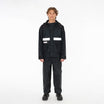



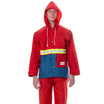


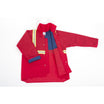

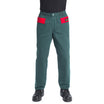



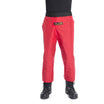






Leave a comment
This site is protected by hCaptcha and the hCaptcha Privacy Policy and Terms of Service apply.